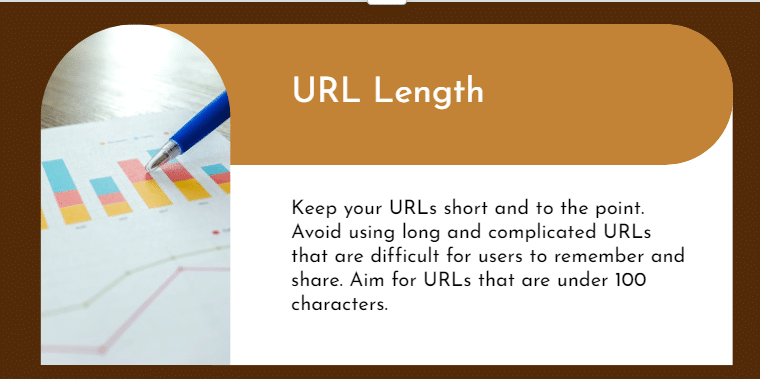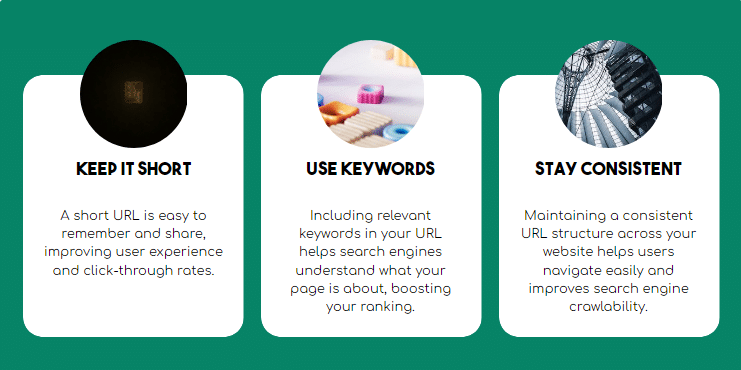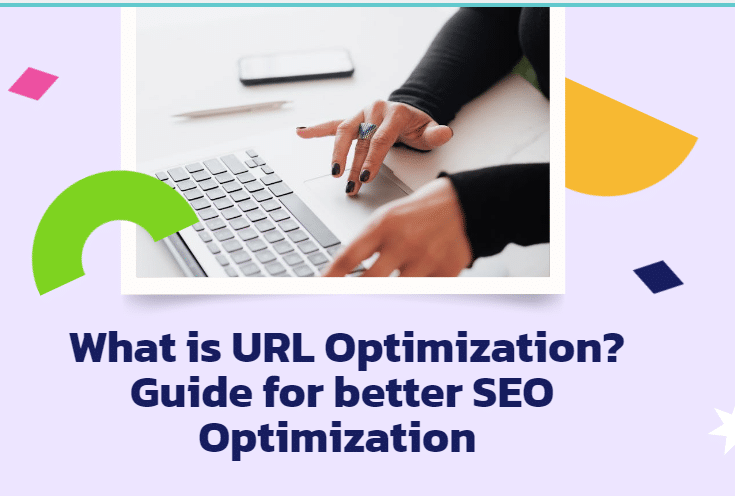What is URL Optimization?
The technique of organizing and improving URLs to make them more user- and search engine-friendly is known as URL optimization. URL optimization stands as a crucial yet often overlooked element that can significantly impact your website’s performance. A well optimized URL improves user experience in addition to helping you with SEO. However, what is URL optimization really, and why is it important? This tutorial will cover the fundamentals of URL optimization and provide you with useful hints and methods to improve the visibility and usability of your website.
Clean, informative, and packed with relevant phrases, an optimized URL aids users and search engines in understanding the page’s content. Enhancing click-through rates, search engine rankings, and user experience can all be achieved with effective URL optimization.
The Importance of URL Optimization
Optimizing your URLs is essential for several reasons:
Better Search Engine Rankings:
Search engines use URLs to assess the context and relevancy of a webpage. Better URL optimization can raise a page’s rating in search results by assisting search engines in understanding the page’s content.
Improved User Experience:
Users may more easily comprehend the content they will access when URLs are clear and descriptive. Higher click-through rates and lower bounce rates may result from this.
Improved Indexing:
To ascertain the content and architecture of your website, search engines index and crawl URLs. Your pages’ accurate and effective indexing can be ensured with the use of optimized URLs.
Key Strategies for URL Optimization
1. Use Keywords in Your URL
Including relevant keywords in your URL can significantly impact your SEO. For instance, if you have a page about “how to find the URL of a website”, a URL like example.com/how-to-find-url-of-website is more descriptive and SEO-friendly than example.com/page1.
2. Keep URLs Short and Simple
Short and simple URLs are easier to read and remember. Avoid using long URL strings filled with unnecessary parameters. For example, example.com/web-address-with-hyphen is more user-friendly than example.com/2024/08/13/web-address-with-hyphen?source=abc¶m=xyz.

3. Use web address with Hyphens to Separate Words
Hyphens are preferred over underscores for separating words in URLs. Search engines treat hyphens as word separators, making the URL more readable. For example, example.com/seo-slugs is better than example.com/seo_slugs.

4. Avoid Using Special Characters
Special characters like &, ?, or % can create confusion and are not SEO-friendly. Stick to alphanumeric characters and hyphens to ensure your URL is clean and easy to understand.
5. Make URLs Descriptive
A descriptive URL provides context about the content of the page. Instead of using generic URLs like example.com/page123, use descriptive URLs like example.com/url-optimization-points

Understanding URL Structure
Uniform Resource Locator (URL) Basics.
A URL is fundamentally the address used to access online sites. A thorough understanding of a URL’s fundamental elements is necessary for efficient URL optimization. The protocol (http:// or https://), the domain name, and the path to the particular resource are usually included in a URL.
Components of a URL
A URL is structured as follows:
- Protocol: Indicates how data is transferred (e.g., http, https).
- Domain Name: The main address of the website (e.g., example.com).
- Path: The specific location of a resource (e.g., /articles/how-to-optimize-urls).
How to Create an Optimized URL
Creating an optimized URL involves several steps:
Research Keywords
Keyword research is the most important sector that is related to your content. We can use tools for keyword searching like Google keyword planner Semrush
ahref and many more. These tools help to identify the keywords with low competition and high search volume.
Incorporate Keywords into the URL
After the identification of your related keywords you have to add them in your URL. For example if your content is about how to make a URL for a website, a URL like example.com/how-to-make-url-for-website would be appropriate.

Ensure URL Readability
Your URL must be easy to read and understand and do not use complex structures and words in the URL. Make it clear and easy to read as example.com/readable-url-tips is more effective than example.com/2024/08/readable-url-tips.
How to Find the URL of a Website
It is very easy to find a website’s URL. Usually, your browser’s address bar is where you can discover it. To obtain the URL of a specific page or other more specialized queries, you may need to use SEO plugins or website crawlers.
1. Google Search Console
You may get useful information about how well your URLs are performing in search results by using Google Search Console. You can examine URL performance, find crawl issues, and verify the indexing status.
2. Tools for SEO
Track keyword rankings, analyze URL performance, and pinpoint areas for improvement by using SEO tools like Ahrefs or SEMrush. With the aid of these tools, you may efficiently optimize your URLs with their extensive statistics and data.
How to check website URL Google Analytics
Google Analytics offers comprehensive data regarding the URLs on your website, including the most popular ones and user behavior. When it comes to better SEO and URL optimization, this information can be quite helpful.
Go to Google Analytics.; Enter your Google Analytics login information and choose the property for analysis.
Select the section on behavior; Select Behavior from the menu on the left, and then click Site Content. You can view a range of reports from this page that offer insights into how users interact with your URLs.
Examine the Report for All Pages: Under the Site Content area, select All Pages. This report includes stats like average time on page, bounce rate, and pageviews with a list of all the URLs on your website.
Examine the Performance of the URL ; Examine each URL’s performance data. Keep an eye out for URLs that have low interaction or high bounce rates, as they could point to problems with the URL’s content or structure. Utilize this information to find URLs that could require improvement.
Examine any URL errors; You may also look for 404 errors in the Behavior area by selecting Landing Pages, then Site Content. Find the URLs that are giving you issues, and take action by either rerouting them to the appropriate pages or repairing the broken links.

Advanced URL Optimization Strategies
SEO Slugs and Their Optimization
Making sure your SEO slugs are distinct, packed with keywords, and organized to complement your overall SEO strategy are some advanced optimization techniques.
Uniform Resource Locator Scanning
The process of assessing URLs to make sure they are optimal for both SEO and usability is known as uniform resource locator scanning. This entails making sure that URLs have the right structure, looking for broken links, and confirming that they are search engine optimized.
SEO Slugs and Their Role
The portion of a URL that comes after the domain name and usually contains keywords associated with the page’s content is known as the SEO slug. For instance, the SEO slug in the URL https://example.com/seo-slugs-role is seo-slugs-role. This portion of the URL is essential since it communicates the page’s topic and intent to search engines as well as users.
How to Make a URL for a Website
How do I create a url
The Steps to make URL for a website are;
1. Choose a Domain Name
- Unique and Memorable: Reflects your brand and is easy to remember.
- Relevant to Your Business: Incorporates keywords to enhance SEO.
- Short and Simple: Avoids complexity and long names.
2. Decide on the URL Structure
- Descriptive Paths: Clear and informative paths that indicate page content.
- Consistent Format: Uniform URL format across the site for better navigation.
3. Incorporate Relevant Keywords
- Keywords in URL: Helps search engines understand page content and improve SEO.
4. Use Hyphens to Separate Words
- Hyphens (-): Preferred over underscores or other characters for readability.
5. Avoid Special Characters
- Avoid Special Characters: Refrain from using &, %, ?, etc., to prevent complications.
6. Create a User-Friendly URL
- Clarity: Make URLs easy to read and understand to improve user experience.
7. Use Lowercase Letters
- Lowercase Letters: Prevents issues with case sensitivity and duplicate content.
Examples of Effective URLs
- Good Example: example.com/how-to-make-url-for-website
- Bad Example: example.com/2024/08/page1
Best Practices for URL Optimization
Readable URLs and Friendly Links
A readable URL is easy to understand and remember. It should convey the content of the page. For instance, “/best-practices-url-optimization” is more user-friendly than “/post/12345”. While a friendly link provides a clear and descriptive path to your content. Both contribute to better SEO and user engagement.
Using Hyphens vs. Underscores
When separating words in a URL, use hyphens (-) instead of underscores (_). Search engines interpret hyphens as spaces, while underscores are treated as word joiners, which can affect SEO.
Avoiding Long URL Website
Long URLs can be problematic as they are harder to read and remember. Aim to keep URLs concise and relevant to the content.
URL Optimization Techniques
URL Source and Source URL;
It is essential to comprehend the meaning of source URL and URL source to optimize and manage your site content. The original web address that data or information originates from is referred to as the source URL. Making sure the source URL is optimized might improve your site’s SEO performance and reputation. Managing and recognizing backlinks and references to your content can also be aided by URL source.
Example:
- Source URL: https://www.example.com/research/article12345
- URL Source: https://www.example.com (This indicates the main website where the information was found, but it might not point to the specific page.)
Underscore in URL and SEO slugs
It’s crucial to consider the usage of SEO slugs and the effect of underscores in URLs while generating them. Underscores in URLs should be avoided since search engines may misunderstand them. Since they are used as word separators, hyphens are recommended. However, SEO slugs—the portion of the URL that follows the domain name—can be customized to contain pertinent keywords, which makes them a crucial component of URL optimization.
What WWW Stands For
The World Wide Web is indicated by the WWW in a web address. It is a popular prefix used in web addresses to indicate that the resource is part of the web, even though it is not required for the functioning of the URL.

Conclusion
One essential component of SEO that has a big impact on the functionality and user experience of your website is URL optimization. To help improve SEO, your URL should include relevant keywords that reflect the page’s content, making it easier for search engines to understand and rank. Also making URLs short and easy to navigate, avoiding special characters, and knowing the significance of source URL, underscore in URL, URL source, SEO slugs, readable URL, and friendly links.
Optimized URLs help your website rank higher in search results and enhance user experience by making it simpler for users to navigate and comprehend. Using resources like Ahrefs, SEMrush, and Google Analytics can help you optimize and track your URLs more successfully.
FAQs
Q1: What is an optimized URL?
A: An optimized URL is a web address designed to be easily readable by both users and search engines. It often includes relevant keywords, is concise, and avoids unnecessary parameters or characters.
Q2: What is a URL in SEO?
A: In SEO (Search Engine Optimization), a URL is the address of a web page. It plays a crucial role in helping search engines understand the content of the page and improve its ranking in search results.
Q3: Why is URL important?
A: URLs are important because they help search engines and users understand the content of a page, contribute to better indexing, and improve user experience by being easy to read and remember.
Q4: How do I optimize a website link?
A: To optimize a website link, use descriptive and relevant keywords, keep the URL short and simple, avoid special characters, and use hyphens to separate words. Ensure the URL reflects the content of the page.
Q5: How do I create a URL?
A: To create a URL, choose a relevant domain name, define a clear and descriptive path for the page, and ensure it is optimized for SEO by using keywords and avoiding unnecessary characters.







